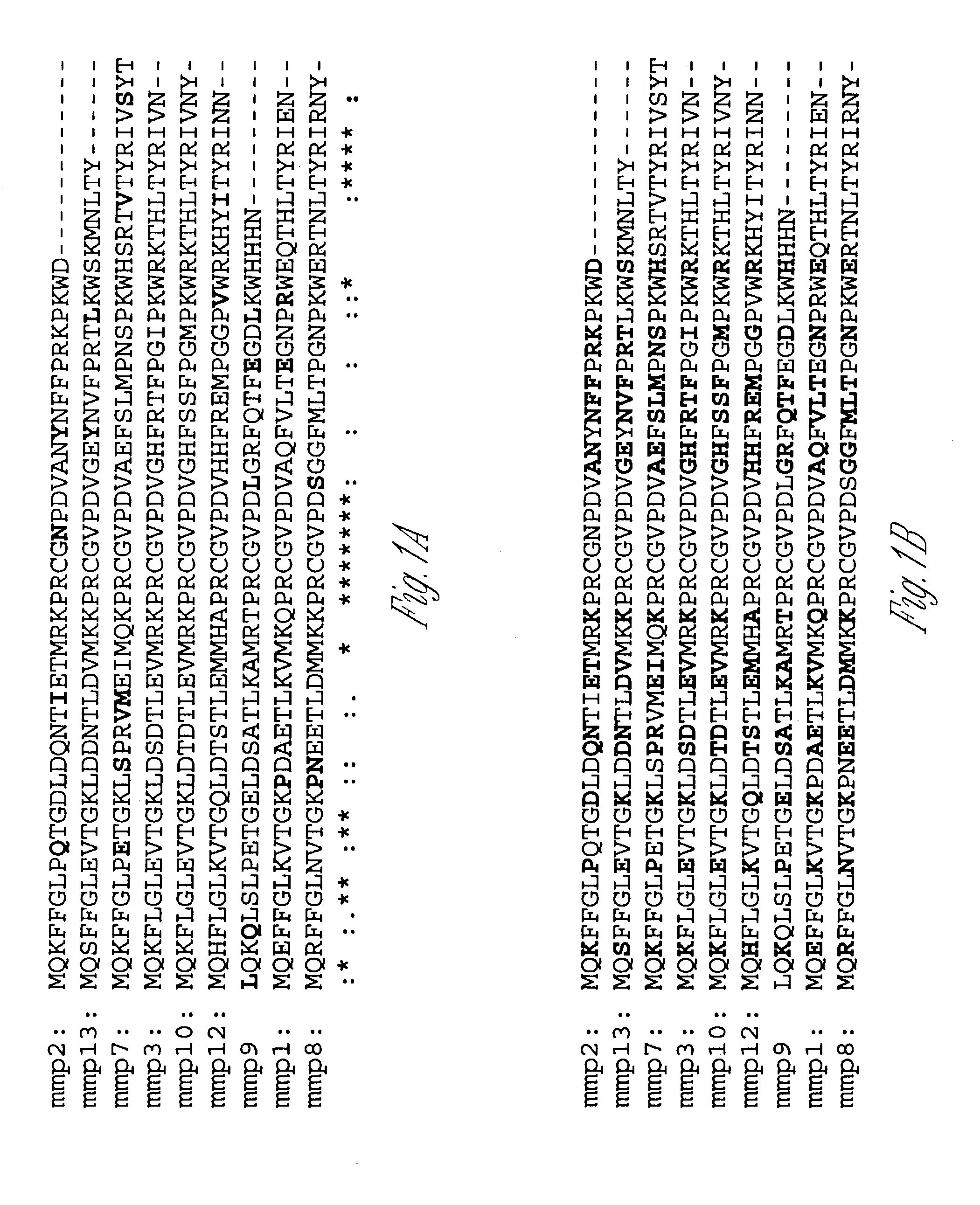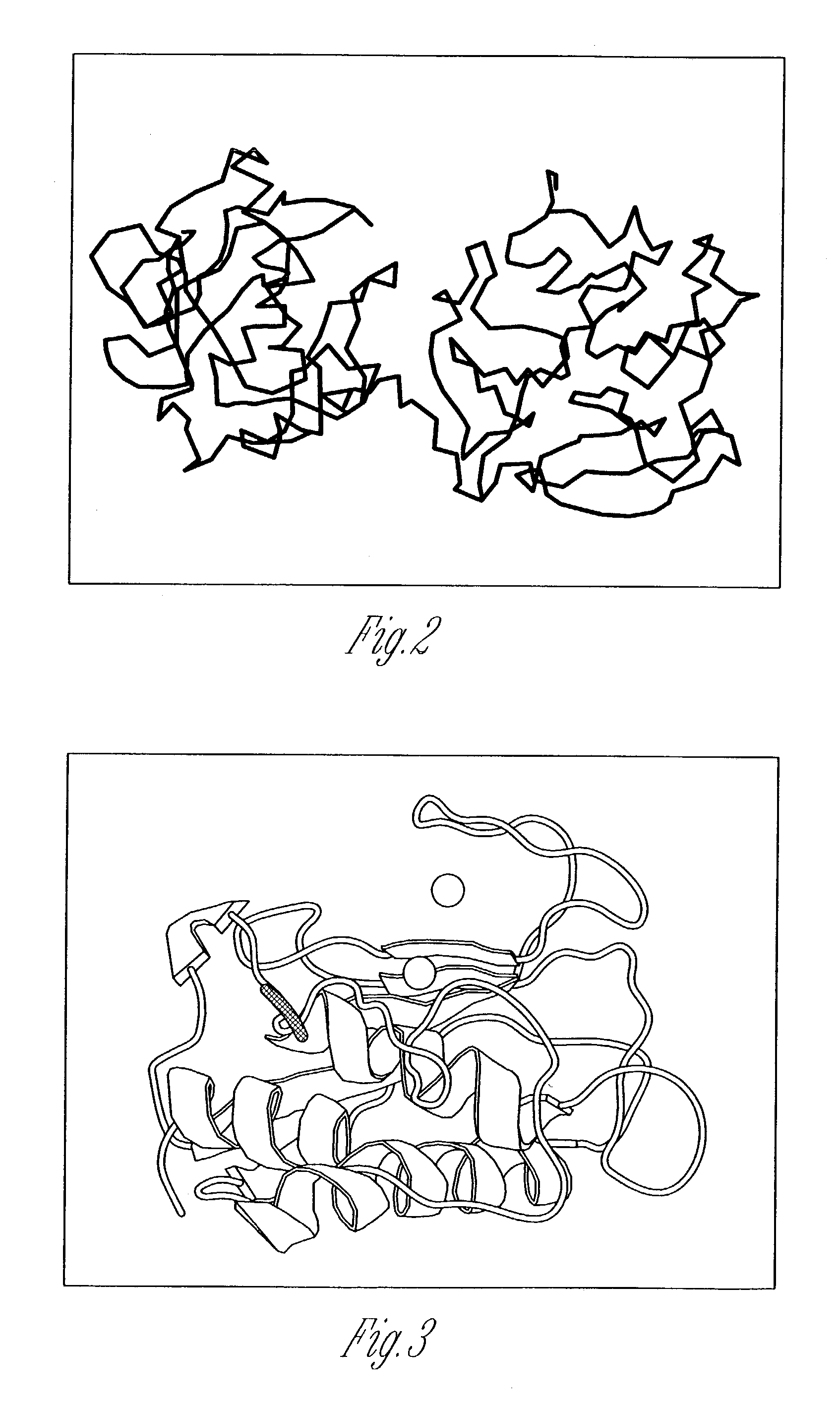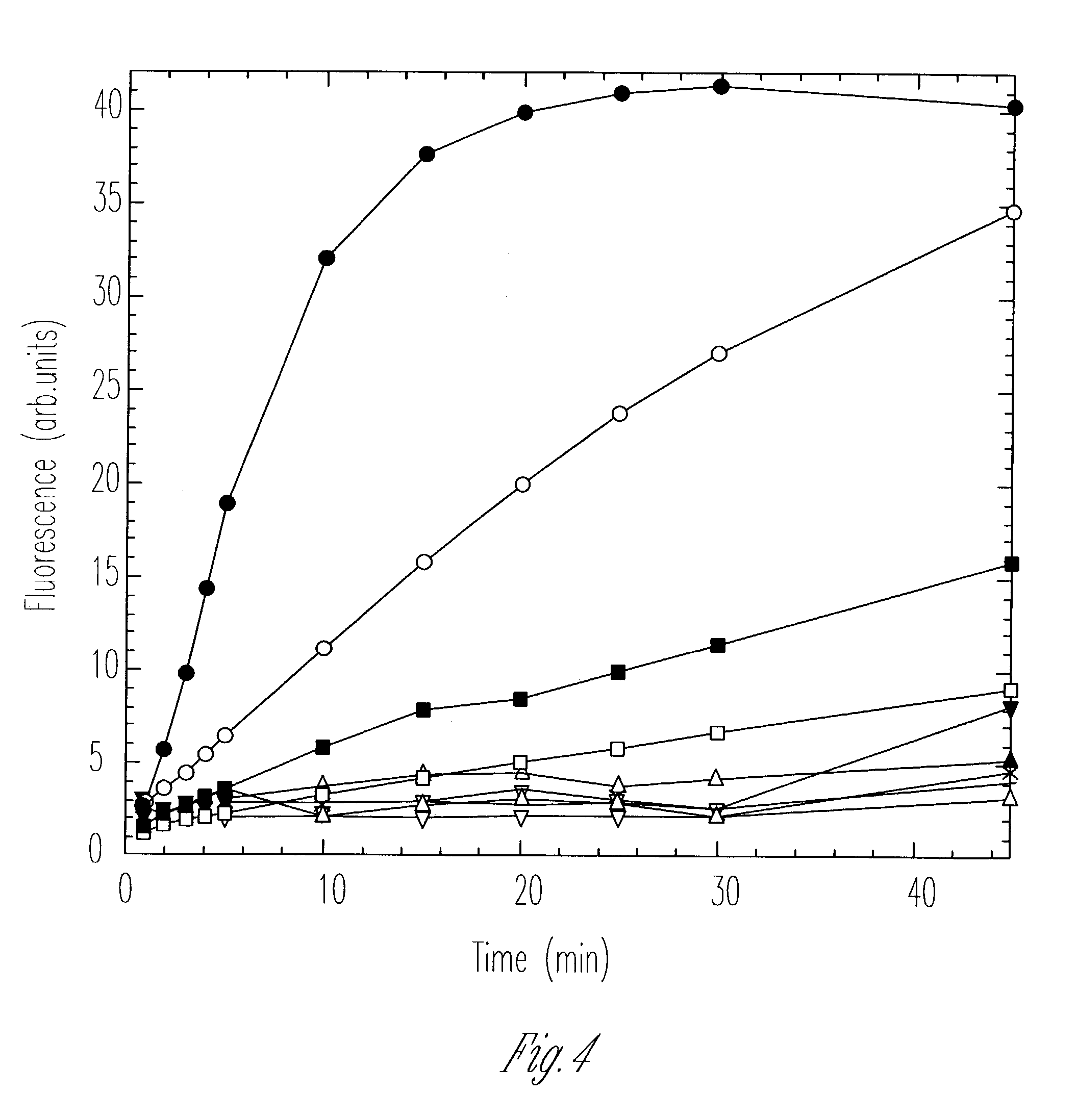Method to increase fibronectin
a technology of fibronectin and fibronectin, which is applied in the direction of peptide/protein ingredients, drug compositions, peptide sources, etc., can solve the problems of wrinkling, discoloration and laxity of the skin, and hyperplasticity of the elastic fiber system, so as to promote the condition of the skin, maintain healthy skin, and strengthen the skin
- Summary
- Abstract
- Description
- Claims
- Application Information
AI Technical Summary
Benefits of technology
Problems solved by technology
Method used
Image
Examples
example 1
Peptide Inhibitors
General Materials
[0214]All peptides were synthesized by Sigma-Genosys, Inc. The released peptides were purified to >95% homogeneity via RP-HPLC by the company. The pooled eluted peak material was desalted and lyophilized. Mass Spectroscopy analysis confirmed the peptide molecular weight and purity. Unless otherwise noted, all chemicals were purchased from Sigma Chemical Corp. or from Fluka Chemical Co. Active MMP-9 enzyme was purchased from Calbiochem.
Molecular Modeling
[0215]Molecular modeling utilized two visualization programs, Swiss PDB Viewer (Guex and Peitsch, 1997) and Rasmol (Sayle and Milner-White, 1995). Model work was performed on a Compaq PC running Windows 95, as well as a Silicon Graphics, Inc. Octane UNIX workstation. Additionally, the Cerius2 molecular package from Molecular Simulations, Inc. was utilized on the Octane. Three dimensional structure files were downloaded from the Protein Databank as follows (filename, reference): MMP-1 (1FBL, Li et al....
example 2
Methods
[0252]The mice were obtained from The Jackson Laboratories and were aged 3–7 months before the onset of the wounding protocol. All mice were anesthetized prior to wounding. Wounds were created in C57BL6 / KsJ db / db mice with a 4 mm biopsy punch. Two wounds were introduced onto the upper back of each animal by pulling the skin away from underlying structures and pushing the punch through the isolated skin. Typically, wounds were created to an average depth of 1.7 mm, with a range of 1.3 to 2.2 mm. No muscle involvement occurred during the course of wounding. Immediately post-wounding, the wounds were either treated with normal saline (to serve as the non treated control group) or with 5 μL of 20 μg / mL 19-mer.
[0253]Each day the wounds were digitally photographed and wound areas were determined by computer integration of the photographs. All wound treatments and the subsequent data analyses were performed in a blind manner (see e.g., Brown et al., 1994). Wound area at...
example 3
Stimulation of Fibroblast Growth
[0255]This Example provides data showing peptides that stimulate fibroblast proliferation.
Materials and Methods
[0256]A human skin fibroblast cell line (Clonetics, Walkersville, Md., normal human dermal fibroblasts, neonatal, catalog number CC-2509) was tested to ascertain whether exposure to a peptide would stimulate cellular proliferation. The proliferative response of the human skin fibroblast cell line to the 19-mer was measured in a 96-well assay system using serum-free medium as a control. A stock solution containing 0.5 g / L of the 19-mer was prepared in water and then diluted with serum-free Dulbecco's Modified Eagle's Medium (DMEM, Sigma Chemical Co., St. Louis, Mo.) to form solutions containing the peptide at 1×10−4 M, 1×10−5 M and 1×10−6 M. Cells were seeded into 96 well plates at a concentration of 1×103 cells in 100 μl of DMEM containing 10% fetal bovine serum (FBS, Sigma Chemical Co., St. Louis, Mo.). Plates were incubated for 24 hours at ...
PUM
| Property | Measurement | Unit |
|---|---|---|
| Molar density | aaaaa | aaaaa |
| Molar density | aaaaa | aaaaa |
| Molar density | aaaaa | aaaaa |
Abstract
Description
Claims
Application Information
 Login to View More
Login to View More - R&D
- Intellectual Property
- Life Sciences
- Materials
- Tech Scout
- Unparalleled Data Quality
- Higher Quality Content
- 60% Fewer Hallucinations
Browse by: Latest US Patents, China's latest patents, Technical Efficacy Thesaurus, Application Domain, Technology Topic, Popular Technical Reports.
© 2025 PatSnap. All rights reserved.Legal|Privacy policy|Modern Slavery Act Transparency Statement|Sitemap|About US| Contact US: help@patsnap.com



